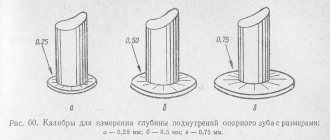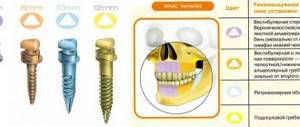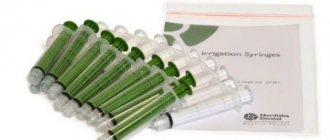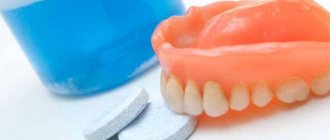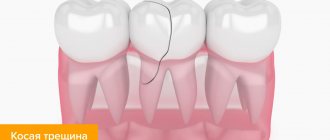3292
Gypsum is a natural material that has found application in medicine.
Due to its unique properties, gypsum is actively used in dental practice, as an aid in dental prosthetics or bite correction.
And this is the only material that has not lost its relevance over time.
A little bit of history
They first learned about gypsum back in antiquity. True, then it was used exclusively for construction purposes.
According to research data, ancient Egyptian pyramids and other architectural structures were built using it.
Mass mining of gypsum began around the 13th century AD. However, it still continued to be used in construction, assigning it the role of a finishing material.
According to information from most sources, gypsum mass was first used in medicine in the middle of the 19th century. The discovery belonged to a Russian military surgeon, who soaked bandages fixing fractures with liquid plaster.
This happened during the Crimean War. Although in fact this composition began to be used in dentistry one decade earlier. To be precise, plaster began to be used to take an impression of the jaw in 1840 .
For quite a long time, gypsum was the only impression composition. But even today it continues to be actively used in dental laboratories.
General sequence of clinical and laboratory stages of manufacturing artificial crowns
Dental prosthetics
Several specialists take part in their creation:
- Orthopedic dentist (carries out diagnostics, design planning, consultation, preparation of teeth for prosthetics - odontopreparation, taking impressions, quality control of the construction at all stages with correction if necessary, fitting, temporary and permanent fixation, dispensary observation - periodic examinations);
- Dental technician (together with the doctor, plans the future design and carries out its direct production on models (plaster analogues of teeth and jaws, obtained from impressions) in the laboratory, makes adjustments, if any);
- Dental assistant – performs auxiliary manipulations in the oral cavity and office during treatment.
Stage 1:
- Diagnostic – basic (questioning, i.e. medical history, examination) and additional (usually one of the types of x-ray examination) examination methods, drawing up and agreeing on a treatment plan, impressions for diagnostic models and temporary crowns , preliminary determination of color, bite registration . If necessary, auxiliary measures are carried out - a complex of professional hygiene (removal of dental plaque), treatment or re-treatment of caries (replacement of old restorations), endodontic (pulp removal, re-treatment of the root canal system) or surgical (lengthening of the clinical, i.e. visible crown with insufficient height). In a difficult clinical situation, total prosthetics, a special device is used - a face bow , which fixes the position of the upper jaw in the space of the skull and makes it possible to transfer it to a device that reproduces the natural movements of the lower jaw - an articulator. A dental photography protocol is also used - registration of images of the patient’s face in front and in profile, dentition in a closed and open state in the anterior and lateral sections. This manipulation helps the technician in choosing the visual characteristics of the future restoration (building a color scheme for the restoration, determining its size and shape).
Stage 2
- Preparatory – odontopreparation – grinding of hard tissues to create the shape of the tooth stump, providing the possibility of applying and subsequent fixation of the structure, as well as ensuring the correct relationship between the edge of the crown and the soft tissues of the gums. During this manipulation on living teeth, water-air cooling in order to prevent overheating of the hard tissues of the tooth. Taking working impressions, final color determination. Fitting, correction (relining) and temporary fixation of temporary crowns.
Stage 3
- Final – delivery of the work (trying on and, if necessary, correction of the structure, agreement with the patient on the coincidence of the existing and desired results regarding color, shape, size, convenience, temporary (for combined) or permanent (for metal-free structures) fixation; subsequent replacement of the temporary fixation with a permanent one) .
Description of material
Gypsum in natural conditions is represented by crystals of potassium sulfate salt. It is practically never found in its pure form, and most often contains various elements - pyrite, quartz, clay and the like.
Therefore, transparent crystals do not have a distinct color, but may have a shade characteristic of one of them (yellow, black or pink).
To obtain pure gypsum, the mineral is cleaned of impurities and then crushed to a powder state. And the powder is fired in boilers at high temperatures (160-1900).
Depending on the firing temperature and pressure index, two types of gypsum are produced in production, differing in the level of strength and hardening time.
The main properties of the mass as a dental composition:
- safety;
- lack of color and odor;
- fragility;
- low shrinkage rate;
- resistance upon contact with saliva.
Today it is the most accessible material for obtaining accurate impressions.
Basic rules for polishing a prosthesis and the tool used.
Come here if you are interested in the benefits of Ivoclar teeth.
At this address https://zubovv.ru/protezirovanie/semnyie-p/klassifikatsiya-bezzubyih-chelyustey.html you will learn about the features of the classification of toothless jaws according to Schroeder.
The use of gypsum in orthopedic dentistry: features and prospects
A. A. EROFEEV graduate student of the department
One of the most common auxiliary materials in dental production is gypsum. This is a natural material formed as a result of the drying of seas and lakes by precipitation from solutions rich in sulfate salts, or by weathering of rocks.
Gypsum occurs in nature in the form of a mineral - calcium sulfate dihydrate CaSO4 x 2H2O (Fig. 1).
Rice. 1. Gypsum stone.
The structure of the crystal lattice of gypsum is layered, characterized by a strictly regular arrangement of atoms in space. Two anionic groups SO42-, closely associated with Ca2+ ions, form double layers. Water molecules are located between these layers, so they are relatively easily released from the gypsum lattice when heated.
Crystals of pure gypsum are transparent, colorless, but due to the presence of various impurities they can be yellowish, pink, brown and even black in color. Gypsum is rarely found in its pure form. Constant impurities are carbonates, quartz, pyrite and clayey substances.
During industrial, high-temperature treatment, called the dehydration reaction, natural gypsum turns into hemihydrate: CaSO4 x 2H2O = CaSO4 x 0.5H2O + 1.5H2O. To obtain semi-aqueous gypsum, natural gypsum, purified from impurities, is crushed in special crushing plants and gypsum mills to a fine, homogeneous powder.
The crushed gypsum is then loaded into digesters and fired at high temperatures for several hours. Depending on the firing temperature, pressure, and time, different grades of gypsum can be obtained, differing in hardening time and strength.
Under certain heat treatment conditions, semi-aqueous gypsum can have 2 modifications: a- and b-hemihydrates.
-a-gypsum is obtained by heating gypsum dihydrate at T = 110-115 0C under a pressure of 1.3 atmospheres. This gypsum is called autoclaved super gypsum;
-b-gypsum is obtained by heating gypsum dihydrate at T = 95-105 0C and atmospheric pressure. Crystals of the b-modification form a capillary-porous structure, have a developed internal surface, and are more reactive. They require a lot of water to mix and have reduced strength.
-a-gypsum has a dense structure and a small specific surface area, its water requirement is lower and its strength is higher. Its setting time is longer. All dental plaster, according to GOST R51887-2002, ISO 6873, are divided into five classes depending on the purpose and hardness characteristics:
- Plaster for impressions. Low hardness gypsum, very soft and pliable. It is used to obtain full and partial impressions, including those of edentulous jaws. This material hardens quickly and has minimal expansion.
- Medical plaster. Alabaster gypsum of normal hardness. It is suitable for the production of diagnostic anatomical models, as well as models for planning future orthopedic designs. Class II gypsum is classified as an auxiliary material: a dried impression or model has insufficient strength indicators. Classes I and II of dental plaster are not used for making working models, but are suitable only for technical purposes.
- High-strength plaster for models. Hard gypsum class. It can be used for the manufacture of removable full-dentition dentures, removable dentures that replace partial absence of teeth, for the basis of collapsible fixed dentures and other similar products. Unlike the previous class, it has fairly high strength indicators.
- Heavy-duty plaster for models and dies with low expansion. Super-hard plaster, excellent for making dismountable master models, as well as for performing combined work.
- Heavy-duty plaster for models and dies with adjustable expansion rate. A very rare variety, used to make models that require particularly high precision.
For successful work of dental technicians and orthopedic dentists, it is important to remember some rules for working with dental plaster.
- Dental casts should be stored in a dry place. Storage containers must be cleaned before each new filling.
- The instruments and accessories used when working with plaster must be clean, without any remnants of previously used plaster.
- The portion of plaster should be no more than enough to fill two or three impressions.
- No agents should be added as hardening accelerators; if necessary, quick-hardening gypsum should be used. Increasing the mixing time by a few seconds is the best way to speed up the setting.
- It is extremely important to maintain the ratio of powder and water to obtain the desired expansion of gypsum.
- Water and powder should have a temperature of 20 (+1\-1) ˚С.
- The powder should be slowly poured into the water and allowed to sink into it. And only then start kneading with a spatula. Subsequent machine mixing should not exceed 30 seconds. When kneading by hand, this time is 1 minute.
- The gypsum mixture should be poured into the mold immediately after mixing. The filling time cannot be increased due to vibration and especially by adding water!
- The plaster model can be removed from the impression when the temperature of the model decreases.
Following these simple instructions will allow you to work comfortably, quickly, and economically.
In order to evaluate and compare the main characteristics of the most common brands of binders, a comparative analysis of plaster was carried out at the Department of Orthopedic Dentistry of the Voronezh State Medical Academy.
For a comparative analysis, dental plaster of the fourth class (Table No. 1) and third class (Table No. 2) were selected.
Table No. 1. Properties of gypsum type 4
Nameindicator | “Supergypsum-C”, type 4, Russia, “Celite” | Convertin HartSpofa Dental | Elite RockZermack |
Water consumption | 20 ml / 100 g | 27 ml / 100 g | 24 ml / 100 g |
Hardening time | 7-11 min. | 13-21 min. | 14-16 min. |
Compressive strength after one hour | 47 MPa | 43 MPa | 40 MPa |
Specific surface area | 7753 | 6000 | 6560 |
Volume expansion after 2 hours | 0,03 % | 0,045 % | 0,06 % |
Table No. 2. Properties of gypsum type 3
Nameindicator | Elite model Spofa Dental | "Supergips-C", type 3, Russia, "Celite" | Giludur, synthetic Germany, Giulini |
Water consumption | 35 ml / 100 g | 26 ml / 100 g | 32 ml / 100 g |
Hardening time | 10-15 min. | 7-13 min. | 6-11 min. |
Compressive strength after one hour | 21 MPa | 27 MPa | 20 MPa |
Specific surface area, units | 6000 | 6130 | 9752 |
Volume expansion after 2 hours, % | 0,01 % | 0,1 % | 0,2 % |
Tests were carried out in accordance with GOST R51887-2002.
LET'S CONSIDER THE OBTAINED INDICATORS
- Water consumption. Theoretically, for the reaction of converting hemihydrate into dihydrate, 18.6% of water by weight of the binder is required. In practice, to ensure the necessary mobility of the dough, much more is consumed, i.e. the dough has its own specific water requirement. Water requirement is the minimum amount of water required to obtain a given consistency. Excess water in addition to the reaction evaporates from the resulting gypsum stone, pores form in it, which reduces the strength of the model. Therefore, you should strive to accurately measure the water to obtain the optimal consistency.
- When gypsum binders harden, hydration of hemihydrate gypsum occurs, i.e., the reaction of addition of water to the hemihydrate, and 29 kJ of heat is released per 1 kg of hemihydrate. The hardening process does not occur immediately, but gradually. Semi-aqueous gypsum dissolves in water until a supersaturated solution is formed and the dihydrate is subsequently released from it. The massive formation of dihydrate particles leads to the fact that the plastic gypsum mixture becomes compacted and thickens. This is the beginning of its setting.
- Compressive strength depends on many factors: the purity of gypsum raw materials, its structure, methods and modes of its processing, and modifying additives. The tensile strength is measured in megapascals: 1 MPa = 10 kgf/cm² (Fig. 2).
Rice. 2. Gypsum compression testing machine.
- Specific surface area is the total surface area of all crystals per unit volume or mass. The value of the total specific surface depends on the size, shape and microstructure of the gypsum particles. As the particle size decreases, the specific surface area increases, while their reactivity increases and quality improves.
- Volume expansion. Plasters mixed with water are prone to complex deformations. First, in the shortest period of time, the highly fluid mass shrinks, then its volumetric expansion occurs. Shrinkage occurs before the formation of a crystalline framework. Volumetric expansion is caused by the filling and fouling of the framework by growing dihydrate crystals.
The results of a comparative analysis of binders show that the gypsum produced by Celit LLC is not inferior in its main technical characteristics, and in some cases it is superior to similar samples.
Subsequently, testing was carried out with the casts in the dental laboratory at the Department of Orthopedic Dentistry of the VSMA named after. N. N. Burdenko. It has been established that “Supergypsum-C” provides high stability on a spatula and a fluid consistency on a vibrating table, which allows you to increase the number of non-porous impressions filled with one mixing (Fig. 3).
Rice. 3. Making a master model.
Models made from “Supergypsum-C” produced by LLC “Celite” are resistant to chipping, exactly repeat the modeled surface, can be ground, polished and sawed well, the boundaries of the preparation are not damaged when processing the column (Fig. 4).
Rice. 4. The model is processed with a milling cutter and sawed with a diamond blade.
There is no breaking off of edges when removing the model from the impression, which ensures the best result. High spatial stability is achieved due to an extremely low expansion coefficient of less than a tenth of a percent (0.03%) (Fig. 5).
Rice. 5. The master model is made of plaster produced by Celite LLC.
The presented data showed that Supergips-C (Voronezh) has the best technical characteristics among the analogues under consideration.
Thus, from the presented material we can conclude that the use of plaster produced by Celit LLC by dental technicians and orthopedic dentists, taking into account the rules for making plaster models, facilitates the work of specialists and increases the functional and aesthetic properties of dentures. At the same time, the effectiveness of orthopedic treatment of patients increases, and consequently, their quality of life improves.
The studied products are appreciated and widely used by specialists in dental laboratories, teachers of educational centers in Voronezh and other cities of Russia.
The stability of the quality of the above materials, as well as other products of Celit LLC, is ensured through the activities of the production control laboratory, which employs highly professional specialists.
Over the twenty years of the enterprise’s existence, methods of heat treatment of raw materials have been constantly improved, new equipment has been introduced, and new chemical additives have been selected and introduced. Fierce competition in the market with foreign manufacturers does not allow us to rest on our laurels and stimulates the development of the latest gypsum-based binder compositions used in orthopedic dentistry.
Moving on to the second part...
Classification
Main classes of material, depending on strength characteristics and area of application:
- Medical plaster. The strength level is average. It is auxiliary and is used to create diagnostic models when planning further construction. The dried product does not have a sufficient level of strength to be used when creating a working model.
- Composition for modeling. A hard, highly durable type that can be used to create removable orthopedic structures or the base of fixed prostheses.
- Impression compound. Soft structure with low strength. Has the ability to harden quickly with a minimal level of expansion. Scope of application: taking impressions of the jaw.
- Super strong plaster. A material of the highest level of strength, used for making master models and carrying out various combined works, where the slightest errors are excluded.
The indications for the use of these structures are the broadest:
Indications for the use of crowns
- Defects of the natural crown are more than half its size;
- Increased (inappropriate for age) abrasion of teeth; correction of jaw relationship (bite);
- Deep wedge-shaped defects are areas of triangular-shaped loss of hard tissue in the neck of the tooth (near the gums), weakening it and increasing the risk of complete breakage during chewing;
- Congenital anomaly of tooth shape (for example, underdevelopment or complete absence of enamel) or acquired (for example, after injury);
- Some congenital or acquired pronounced color changes that cannot be eliminated by bleaching (discolorities) are the consequences of injuries, medications used or materials for filling root canals;
- Tilting and/or protrusion of a tooth or a group of them when the patient refuses orthodontic treatment (orthopedic “movement”);
- Combining - splinting - teeth when they are mobile (the crowns are not made separately, but as a single block and are fixed at the same time);
- The need to improve the shape and protection of the tooth during removable prosthetics (creating pronounced convex contours that will hold the fixing elements and, along with them, the prosthesis itself);
- The presence of aesthetically unsatisfactory crowns (all-metal, combined with chips of the facing material or a gray-blue border, visible at the gingival margin when it decreases or thins).
Despite the variety of clinical situations in which the use of these structures is justified, the general rule is prosthetics in the early stages.
Terms of use
When working with material, it is important to adhere to a number of rules:
- For storage, you must choose a tightly closed container.
- Before filling it with a new portion of the composition, the container is thoroughly cleaned.
- The container must be stored in a dry place, in a room with normal humidity levels.
- All instruments must be thoroughly cleaned after use.
- The amount of material that is necessary to work with several prints should be selected. Leftovers are not poured into the container.
- Do not use additional admixtures that shorten the hardening period of the material. If necessary, it is better to use another brand that has a higher setting speed.
- Strictly observe the proportions of gypsum and water. Otherwise, you risk exceeding the mass expansion parameters.
- The temperature of the powder and water should be 200. The permissible deviation is 10.
- During the mixing process, the powder is slowly poured into the water. The manual mixing time is one minute. Next comes machine kneading - half a minute. Changing this time is unacceptable.
- The finished composition is immediately poured into the mold. Adding water is not possible at this stage.
- The model is removed after it has cooled.
Hand kneading technology
You can get a high-quality plaster cast only if you follow the mixing sequence:
- Distilled water is poured into a special bowl, the amount of which is determined by the class of the powder.
- Gypsum powder is slowly poured into the liquid. According to standards, about 10 seconds should pass from the start of contact of the first particles with water to the end of falling asleep.
- After this, you should wait until the particles are completely immersed in water and only then start mixing with a metal or plastic spatula.
- Movements should be as energetic as possible. The consistency of the complete mixture is creamy and homogeneous.
If too much water is added, the plaster will only absorb the amount it needs. The remaining water will quickly make the structure of the material loose and reduce the accuracy of the impression. Not the best solution would be to add less liquid than required by the technology for producing the mixture. Thick plaster does not make it possible to obtain an accurate imprint due to the formation of air bubbles that simply do not have time to reach the surface due to too rapid hardening.
Taking an impression of the upper jaw on video:
Application Basics
The main task of a dental technician is to produce an ideal orthopedic structure in all respects.
The finished model must have the required level of strength and meet the required technical standards. That is why work with the composition must be carried out in a clear sequence.
Preparation
Before starting work, you need to check the cleanliness of the tools, paying attention to the absence of moisture on them.
If there are particles of old material left on the spatula or mixing container, they must be removed, as this may affect the duration of expansion and hardening of the freshly prepared composition.
Any class of mass must be mixed in strict compliance with proportions. Measuring ingredients “by eye” changes the properties and characteristics of the finished composition.
Water used for mixing
To prepare the gypsum composition, settled tap water is used; the temperature should not exceed 19-210.
When using hard water, the hardening period of the mass is reduced. In this case, it makes sense to use demineralized water.
Let's discuss together the properties of the material for relining a removable denture and the indications for the procedure.
See this publication for photos of dentures with suction cups.
Here https://zubovv.ru/protezirovanie/semnyie-p/funktsionalnyi-poliuretanovyie.html read reviews from dental technicians about polyurethane dentures.
Powder addition
The powder is poured into the water evenly, but quickly enough (approximate time - 10 seconds). Then you need to wait 20 seconds until the plaster has completely settled.
Only after this can you start kneading with a spatula. The manual mixing time depends on the class of powder.
For low-strength material, the duration of this stage is 30 seconds. All other types of material are mixed for one minute.
Unboxing
According to the canons, exactly 30 minutes should pass from the moment the gypsum mass is poured to the removal of the frozen sample. To use other impression materials, unpacking is carried out after an hour.
Extension
Any material tends to expand during the hardening period.
The expansion coefficient will depend on the type of material chosen , the level of air humidity in the room and temperature indicators.
Expansion of the gypsum composition is necessary to compensate for the shrinkage of other materials.
Kneading
It is preferable to mix the gypsum composition under vacuum using special equipment.
Machine mixing of impression mass not only improves the quality of the material, but also reduces the duration of this process.
In this case, class 1 gypsum is mixed exclusively by hand. To preserve the structure of the material, it is forbidden to add water at this stage.
Fill
During the hardening process, the impression mass begins to crystallize and its strength level decreases. In this state, it is impossible to reproduce the smallest elements of the model, so further work with the material will be useless.
To prevent this from happening, the finished mass should be poured into the mold immediately , without waiting for hardening to begin.
Modeling
The modeling process can begin immediately after the shine disappears from the surface of the plaster. This usually happens after a minute.
Subsequent hardening occurs over different times, depending on the type of material. For example, for hard plaster it will take 10-15 minutes, but for super-strong material this time will not be enough.
Model defects
To avoid spreading of the sample and other unpleasant surprises, the cavity between the gypsum composition and the alginate mass should be treated.
For this, a neutralizing solution, water or dry gypsum powder can be used . Instructions for using polyester impression material are indicated in the instructions.
Wetting the model
Sudden temperature changes can increase the fragility of the plaster model, which can cause it to wear out quickly.
Therefore, if steam or other heat treatment is necessary, it is recommended to moisten the sample.
Also, short wetting helps prevent the structure from breaking during sawing or preparation.
From the video you will learn how to create a plaster model.
Composition and technical characteristics
In terms of its composition, dental gypsum is calcium sulfate dihydrate (CaS04 - 2H20).
This is a sedimentary rock with a layered crystal lattice, formed by precipitated sulfate salts. Gypsum is traditionally mined in lakes and lagoons from aqueous solutions through drying. Also, deposits of natural gypsum are found in mountainous areas along with limestones, rock salt, and clays.
Temperature treatment (firing or calcination) transforms the substance into calcium sulfate hemihydrate (CaS04)2 - H20, further heating - into anhydrite.
In dental practice, a semi-aqueous modification of gypsum is used, which has a number of necessary characteristics, namely:
- dimensional stability and accuracy;
- excellent color contrast;
- environmental safety;
- lack of taste and smell;
- insolubility under the influence of saliva;
- low shrinkage rates;
- affordable price.
When choosing an auxiliary material, it is necessary to pay attention to strength indicators, the degree of water absorption, the absence of metal impurities, the proportion of hydration water and volumetric expansion values.
Manufacturers supply gypsum powder in bags made of paper or cellophane impregnated with a water-repellent substance and packaged in jars equipped with ground-in lids. The packaging must contain information about the trade name of the product, information about the manufacturer and supplier, gypsum class, scope of use, color characteristics, net indicators. Also on the packaging there are recommendations about the rules and shelf life, and the batch number.
Reviews
Do you think it is advisable to use gypsum in dentistry, or perhaps it is high time to switch to more modern materials?
Leave your feedback and opinions on this matter in the comments.
If you find an error, please select a piece of text and press Ctrl+Enter.
Tags: gypsum in dentistry, prosthetics
Did you like the article? stay tuned
No comments yet


